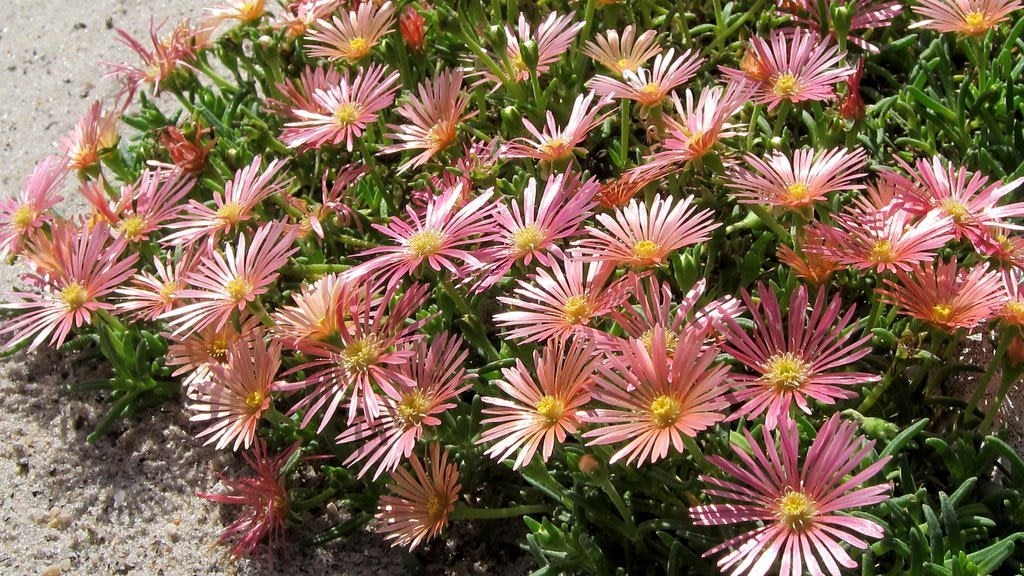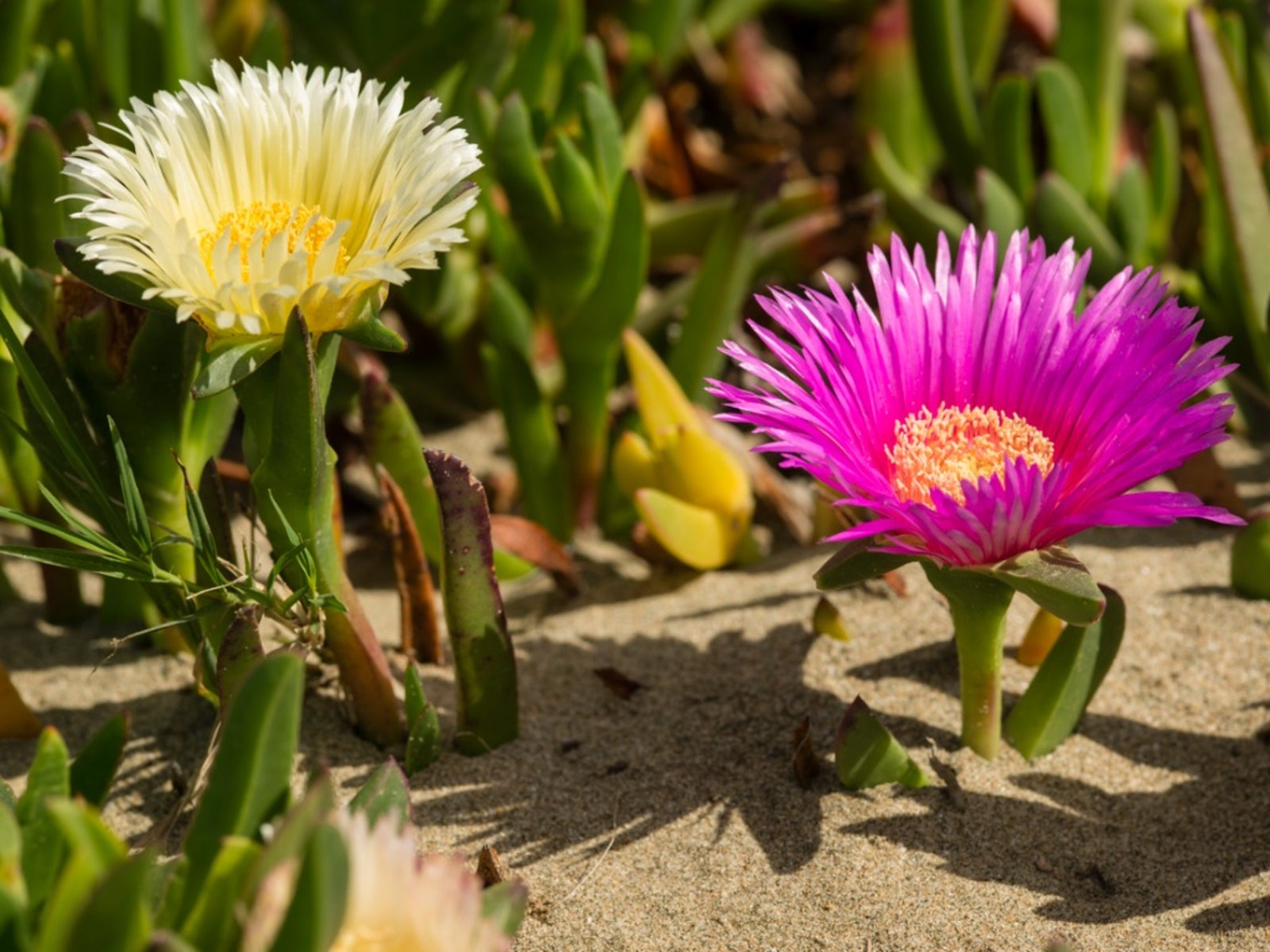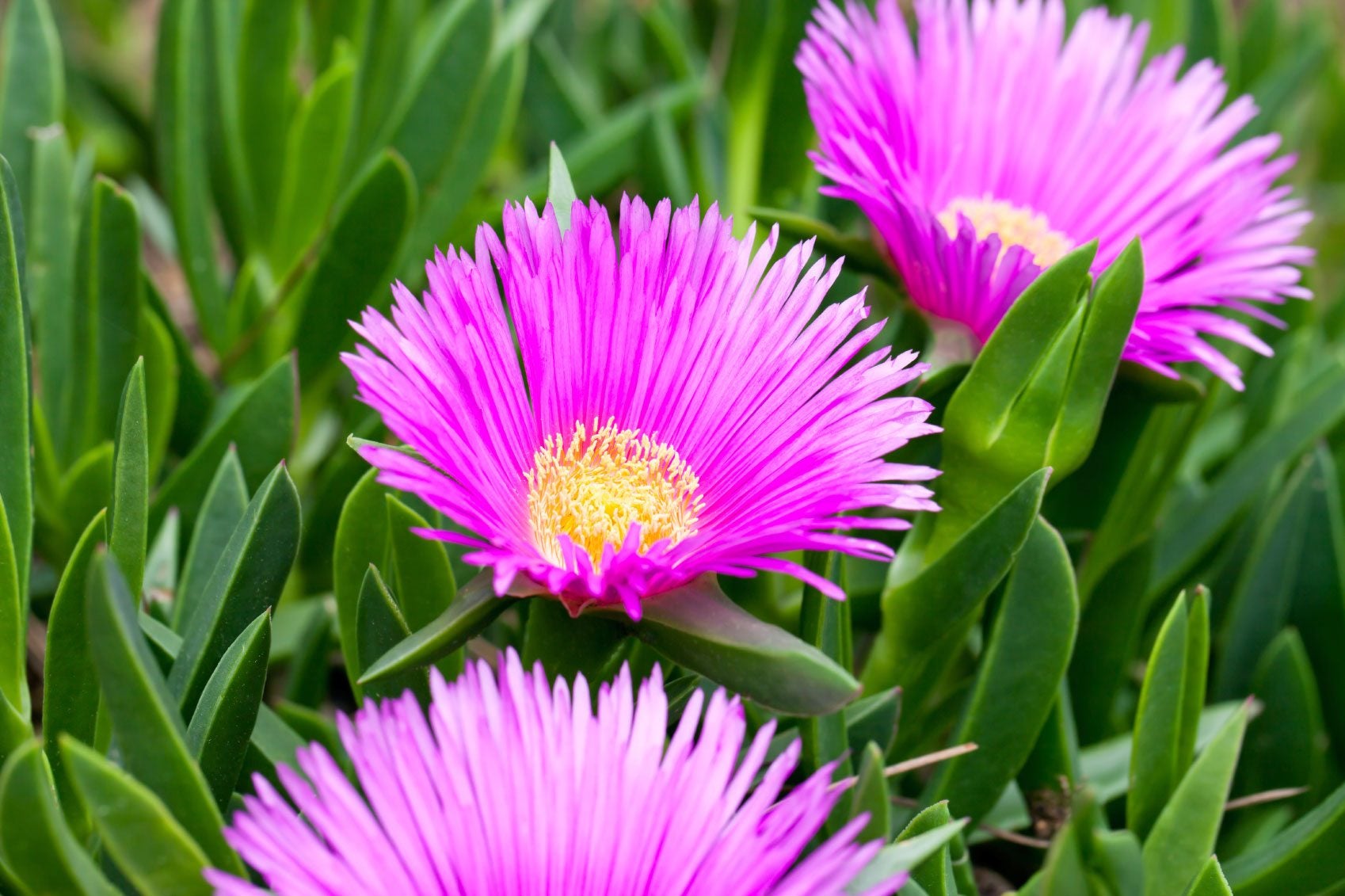Delosperma Kelaidis Info: Learn About Delosperma ‘Mesa Verde’ Care


It is said that in 1998 botanists at the Denver Botanical Garden noticed a naturally occurring mutation of their Delosperma cooperi plants, commonly known as ice plants. These mutated ice plants produced coral or salmon-pink flowers, instead of the usual purple blooms. By 2002, these salmon-pink, flowering ice plants were patented and introduced as Delosperma kelaidis ‘Mesa Verde’ by the Denver Botanical Garden. Continue reading for more Delsperma kelaidis info, as well as tips on growing Mesa Verde ice plants.
Delosperma Kelaidis Info
Delosperma ice plants are low-growing, succulent, groundcover plants that are native to South Africa. Originally, ice plants were planted in the United States along highways for erosion control and soil stabilization. These plants eventually naturalized throughout the Southwest. Later, ice plants gained popularity as a low maintenance groundcover for landscape beds because of their long bloom period, from mid-spring to fall. Delosperma plants have earned their common name “ice plants” from the ice-like white flakes that form on their succulent foliage. Delosperma “Mesa Verde” offers gardeners a low growing, low maintenance, drought tolerant variety of ice plant with coral to salmon colored blooms. Labeled as hardy in U.S. zones 4-10, the gray-green, jellybean-like foliage will remain evergreen in warmer climates. The foliage may develop a purple tinge during winter months. However, in zones 4 and 5, Delosperma kelaidis plants should be mulched in late fall to help them survive the cold winters of these zones.
Delosperma 'Mesa Verde' Care
When growing Mesa Verde ice plants, well-draining soil is essential. As plants establish, spread, and naturalize by way of prostrate stems that lightly root as they spread over rocky or sandy terrain, they will become more drought resistant with more and more fine, shallow roots and foliage to absorb moisture from their environment. Because of this, they are excellent groundcovers for rocky, xeriscaped beds and for use in firescaping. New Mesa Verde plants should be watered regularly the first growing season, but should maintain their own moisture needs after that. Mesa Verde prefers to grow in full sun. In shady locations or soils that stay too moist, they may develop fungal rots or insect problems. These problems can also occur during cool, wet, northern spring or autumn weather. Growing Mesa Verde ice plants on slopes can help accommodate their drainage needs. Like gazania or morning glory, the blooms of ice plants open and close with the sun, creating the beautiful effect of a ground-hugging blanket of salmon-pink, daisy-like flowers on a sunny day. These blooms also attract bees and butterflies to the landscape. Mesa Verde Delosperma plants grow only 3-6 inches (7.5-15 cm.) tall and 24 inches (61 cm.) or more wide.
Gardening tips, videos, info and more delivered right to your inbox!
Sign up for the Gardening Know How newsletter today and receive a free copy of our e-book "How to Grow Delicious Tomatoes".
-
 Get Ready For A Summer Of Hummers! Grow These Full Sun Hummingbird Plants and Flowers
Get Ready For A Summer Of Hummers! Grow These Full Sun Hummingbird Plants and FlowersIf you’re lucky enough to enjoy a sunny backyard, make sure you are maxing out on your pollinator opportunities and grow these full sun hummingbird plants and flowers
By Tonya Barnett
-
 12 Lush Alternatives To A Lawn For Sustainable Spaces
12 Lush Alternatives To A Lawn For Sustainable SpacesAlternatives to a lawn are beautiful and also beneficial to your local ecosystem and its pollinators. Explore our top picks for plants to replace grass.
By Tonya Barnett
-
 Growing Hottentot Fig Flowers: Information About Hottentot Fig Ice Plant
Growing Hottentot Fig Flowers: Information About Hottentot Fig Ice PlantThe super easy-to-grow hottentot fig ice plant has an invasive potential. In most gardens, however, the plant can be kept under control with little effort and the flowers are a cheery early season treat. Click here for more.
By Bonnie L. Grant
-
 How To Grow An Ice Plant And Purple Ice Plant Care
How To Grow An Ice Plant And Purple Ice Plant CareLooking for a drought tolerant but lovely flower to fill in a troublesome dry area in your garden? You may want to try planting ice plants, which can add a bright splash of color to the garden. Learn more here.
By Heather Rhoades